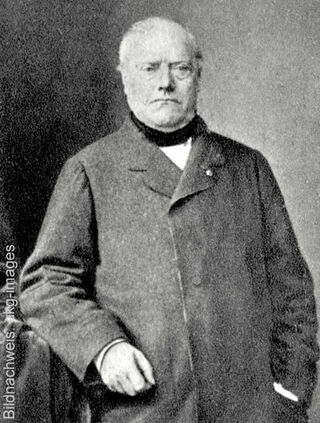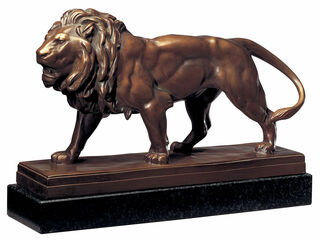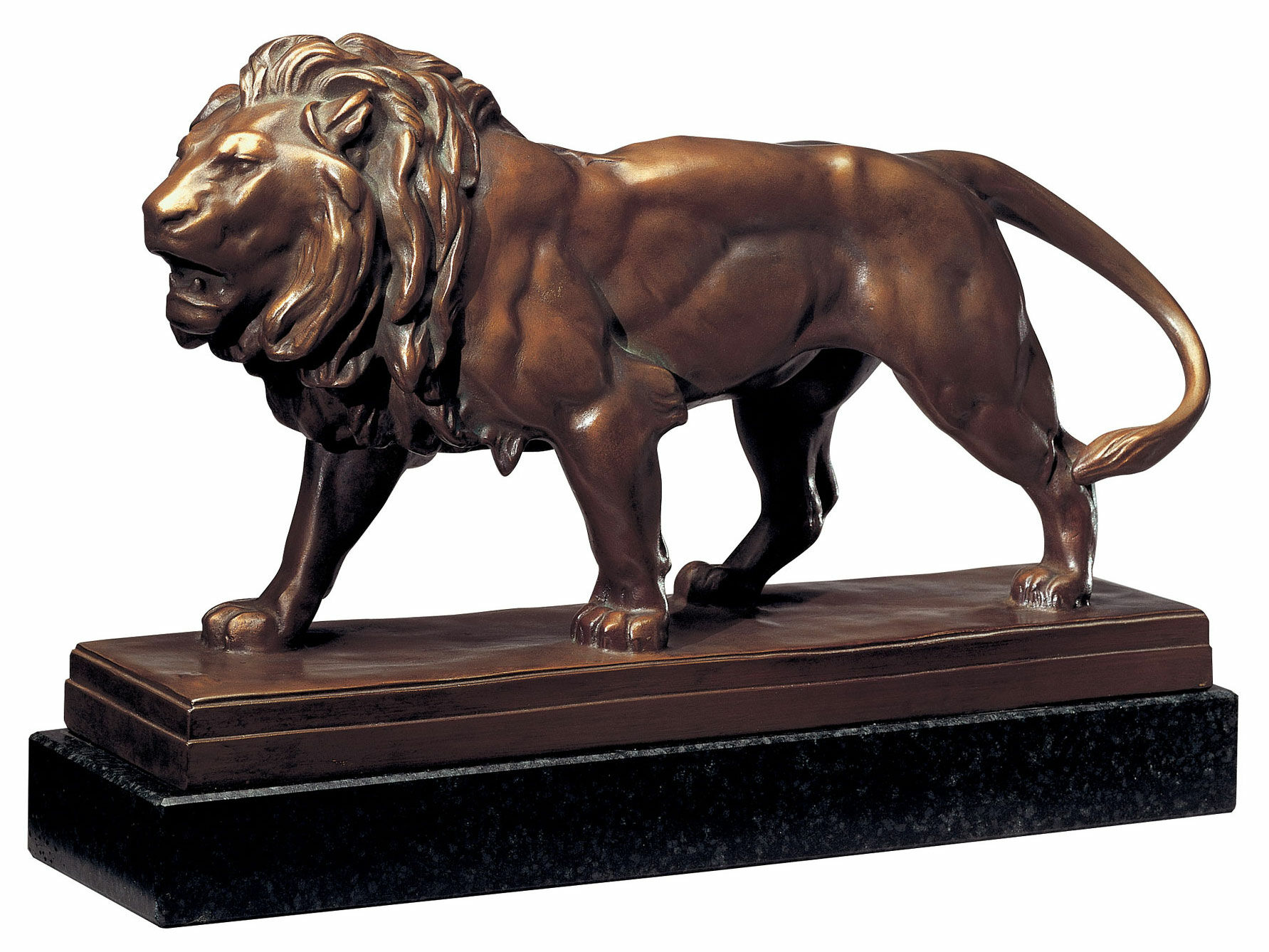Sculpture "Attacking Lion", bonded bronze
Sculpture "Attacking Lion", bonded bronze
Quick info
museum replica | bonded bronze | handmade | height 28 cm | length 42 cm
Detailed description
Sculpture "Attacking Lion", bonded bronze
The Parisian watercolourist, etcher, lithographer and ingenious bronze sculptor Barye became famous for his fascinatingly naturalistic depiction of cats of prey that are ready to leap and fight.
Original: Bronze, State Museums, Prussian Cultural Heritage Foundation, Berlin.
Polymer ars mundi museum replica cast by hand with bronzed surface. Total height 28 cm, length 42 cm.
Customer reviews
Nach anfänglichen Schwierigkeiten mit einem kompletten falsch gelieferten Löwen und der Retoure ist es zum guten Ende gekommen.Die Skulptur ist hervorragend und ist den Preis wert.

About Antoine-Louis Barye
1795-1875
At the Paris Salon of 1831, Bayre caused a sensation with his sculpture "Tiger Devouring a Gavial Crocodile". He was the first to introduce such dramatic and veristic scenes into 19th-century sculpture, which were only similar to the art of Eugène Delacroix. Barye no longer saw the animal as the symbolic carrier of meaning but depicted it in its various genres and their peculiarities.
Extensive studies in the Jardin de Plantes and the National Museum of Natural History in Paris enabled him to create precise representations of nature. In doing so, he took the sculpture out of academic Classicism and contributed to its departure into the modern age.
The son of a goldsmith was born on September 24, 1795, in Paris and received his first training from his father. This was followed by an apprenticeship as a steel engraver, which was perfected through admission to the studios of the sculptor Bosio and the painter Gros. In 1818, Barye was admitted to the École des Beaux-Arts. When the Salon of 1837 rejected him, he founded an arts and crafts firm with a partner, where the models for the world-famous Parisian bronzes were created.
Although he received state commissions through influential patrons, his art only gained general recognition after 1848. He became a professor of zoological drawing at the National Museum of Natural History in 1854 and a member of the Académie des Beaux-Arts in 1868.
Antoine-Louis Barye also created special works of art as a painter and graphic artist, especially with his landscape watercolours. He died on June 25, 1875, in Paris, and is now considered one of the 19th-century artists who liberated art from its historical, mythological and literary constraints.
Bronze powder is polymer-bonded. Special polishing and patination techniques give the surface of the casting an appearance similar to the bronze.
A true-to-the-original reproduction of an artwork in the same size and with the best possible material and colour uniformity.
The mould is usually taken directly from the original so that the replication reproduces even the finest details. After casting the replication, using the most appropriate method, the surface is polished, patinated, gilded or painted according to the original.
A replication of ars mundi is a recognizable copy of the original.
A plastic work of sculptural art made of wood, stone, ivory, bronze or other metals.
While sculptures from wood, ivory or stone are made directly from the block of material, in bronze casting a working model is prepared at first. Usually, it is made of clay or other easily mouldable materials.
The prime time of sculpture after the Greek and Roman antiquity was the Renaissance. Impressionism gave a new impulse to the sculptural arts. Contemporary artists such as Jorg Immendorf, Andora, and Markus Lupertz also enriched sculptures with outstanding works.


